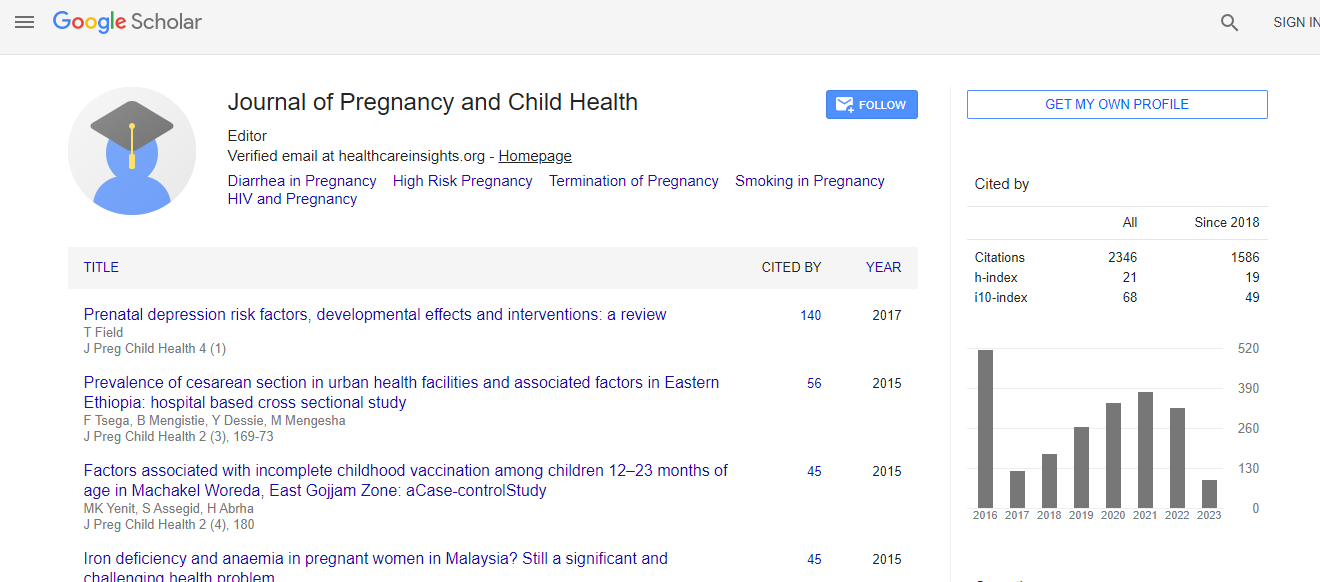Research Article
Study of Urinary Uric Acid and Creatinine Ratio as a Marker of Perinatal Asphyxia and Its Correlation with Different Stages of Hypoxic Ischemic Encephalopathy
Lokesh Choudhary*, Subhash Palsania, PK Berwal, Chhavi Sauparna and Ankit Maheshwari
SPMC Medical College, PBM Hospital, Bikaner, India
- Corresponding Author:
- Lokesh Choudhary
SPMC Medical College
PBM Hospital, Bikaner, India
Tel: 7073516301
E-mail: luksmmc06@gmail.com
Received date: June 07, 2017; Accepted date: June 19, 2017; Published date: June 24, 2017
Citation: Choudhary L, Palsania S, Berwal PK, Sauparna CH, Maheshwari A (2017) Study of Urinary Uric Acid and Creatinine Ratio as a Marker of Perinatal Asphyxia and Its Correlation with Different Stages of Hypoxic Ischemic Encephalopathy. J Preg Child Health 4:336. doi:10.4172/2376-127X.1000336
Copyright: © 2017 Choudhary L, et al. This is an open-access article distributed under the terms of the Creative Commons Attribution License, which permits unrestricted use, distribution and reproduction in any medium, provided the original author and source are credited.
Abstract
Background: Birth asphyxia is one of the leading causes of neonatal mortality in India. Hypoxic-ischemic encephalopathy (HIE) is the neurological manifestation of systemic hypoxia in new-born. 20-25% of asphyxiated babies who exhibit severe HIE, die during the new-born period. The most commonly used diagnostic and prognostic index to evaluate asphyxia in neonates is APGAR score but alone it is not useful to ferret out neurological outcome. Now-a-days uses of biomarkers enable the clinicians to screen infants for brain injury. We conducted this study to evaluate the role of UUA (urinary uric acid)/Cr (creatinine), which is an early biomarker, in diagnosing and predicting the outcome in perinatal asphyxia. Aim: To determine the values of UUA/Cr in new-borns with perinatal asphyxia and its relation with different stages of HIE. Methods: Spot urine samples were collected from the 100 asphyxiated and 100 healthy neonates within 6-24 h of life for determining uric acid and creatinine by auto analyses. Results: The value of UUA/Cr were statistically significantly higher in the asphyxiated (case) compared with the control group. UUA/Cr ratios were significantly higher in infants with severe HIE (3.61 ± 0.61) when compared with infants with Powered by Editorial Manager® and ProduXion Manager® from Aries Systems Corporation moderate HIE (2.95 ± 0.98: P<0.01) and those with mild HIE (2.64 ± 0.25: P<0.001). Conclusion: UUA/Cr concentration increase considerably after birth asphyxia and is non-invasive, sensitive, early and cost effective method for assessment of asphyxia and its outcome.

 Spanish
Spanish  Chinese
Chinese  Russian
Russian  German
German  French
French  Japanese
Japanese  Portuguese
Portuguese  Hindi
Hindi 
